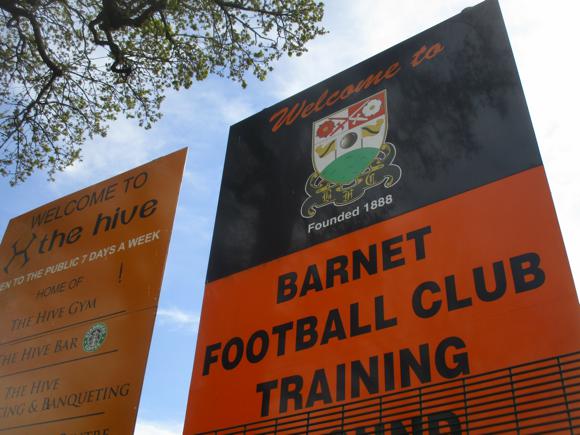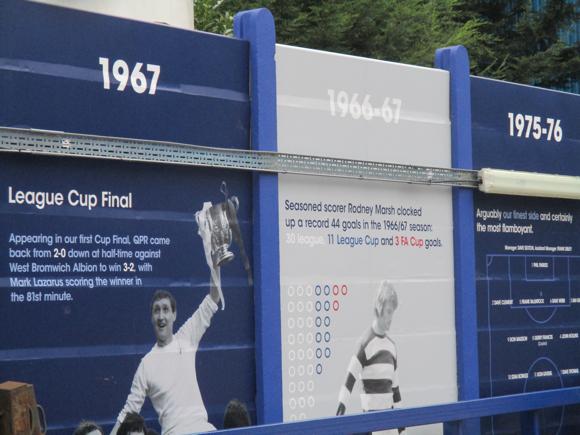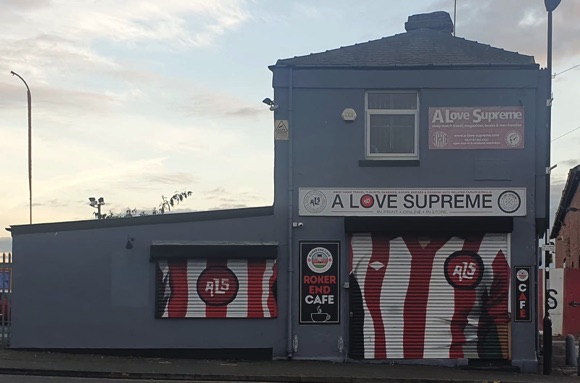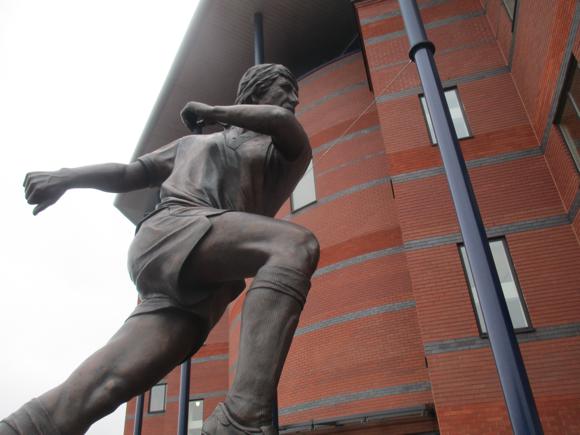A fan’s guide – the club from early doors to today
Champions League winners in 2021, World Club Cup winners in 2022, Chelsea almost collapsed as a going enterprise after Russian owner Roman Abramovich was forced to sell his most famous asset in the wake of the invasion of Ukraine.
As the club passed to a US-led consortium, many were assessing the Roman era of nearly two decades, an empire built on five titles, two Champions League wins and remarkable consistency.
When it seemed as if the Blues were faltering, they were revived on the pitch by the savvy coaching of Thomas Tuchel – and off it by fans who gathered in protest after anger over an impending European Super League swept the football world.
Chelsea hadn’t clicked as was wished under all-time club legend Frank Lampard, so Abramovich had taken the harsh decision to dismiss him – justifiably, it turns out. Going along with the ESL project then had the opposite effect, generating demonstrations so ferocious it helped turn the tide for football’s sake.
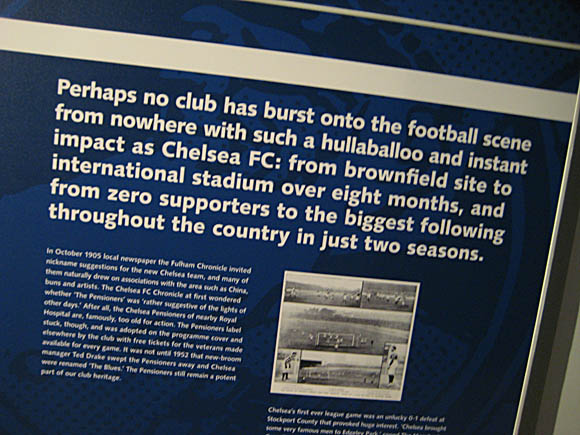


Formed in 1905, Chelsea needed 50 years to win a trophy, a league title under Ted Drake. His successor Tommy Docherty won plaudits with his young side, while his successor, Dave Sexton, won trophies.
With flair players such as Alan Hudson and Charlie Cooke, and a fashionable King’s Road following, Chelsea defined Swinging London. The iconic figure was centre-forward Peter Osgood, whose late diving header took the 1970 FA Cup Final replay with Leeds into extra-time. A header by David Webb took the trophy, allowing Chelsea to grab their first European silverware the following year, Osgood bagging in each game of another successful replayed final. His statue stands outside Stamford Bridge.
On the back of this success, the club nearly bankrupted themselves building a huge stand at Stamford Bridge, and were forced to sell key player Ray Wilkins. There followed an ugly decade of relegation, near liquidation and rampant hooliganism, before owner Ken Bates brought in player-coach Glenn Hoddle in 1993.



Hoddle signed Ruud Gullit, kick-starting a foreign revolution at the Bridge. With Gullit as coach, a Chelsea team with Gianfranco Zola, Roberto Di Matteo and Gianluca Vialli won the cup in 2007, and Cup-Winners’ Cup a year later, Vialli as player-coach.
After Abramovich had bought out Bates in 2003, and brought in José Mourinho, Chelsea moved to a different level. Armed with Frank Lampard, Petr Čech and Ashley Cole, Chelsea broke the Manchester United monopoly to win consecutive league titles. Most of this same team then won the double under Carlo Ancelotti in 2010.
The Champions League, though, eluded them, most notably in titanic clashes with Barcelona. A penalty miss by captain John Terry in the Moscow final of 2008 against Manchester United typified their European campaigns.



The curse was reversed in 2012. Di Matteo had stepped in when things were shaky to steer Chelsea to unlikely wins over Napoli and, bravely, Barcelona, in the semi-final, before the final in Munich. Bayern failed to deliver at home, Bastian Schweinsteiger missed a crucial penalty, and Didier Drogba sealed things with his last kick in Chelsea blue. Suspended John Terry was allowed to lift the trophy at the end.
Di Matteo was later replaced by unpopular Rafa Benítez, who led Chelsea to a Europa League win over Benfica and qualification for the Champions League 2013-14. Always an interim solution, Benítez made way for the much-expected return of Mourinho.
Mourinho still had a bond with the old guard who won back-to-back titles 2004-06, rewarding Abramovich for his multi-million pound investment. With Lampard and Ashley Cole gone, Mourinho turned to Cesc Fàbregas, Diego Costa and the evergreen Drogba to wrest the title from Manchester.


After the wheels came off the wagon in 2015-16, and Guus Hiddink’s subsequent rescue, Antonio Conte breezed in. Achieving record wins and consecutive win streaks, Conte’s side swept away the cobwebs left over from the farewell circus of José Mourinho. Eden Hazard sparkled in Chelsea’s midfield for an impressive title win.
Before his departure, despite a poor defence of the league crown, Conte had the consolation of leading his team out at Wembley for a 1-0 win over Manchester United to claim the FA Cup.
Exit Conte, enter Maurizio Sarri… albeit briefly. Thankfully for the former Napoli boss, at least Eden Hazard was still world-class enough to help the Londoners win the Europa League in 2019. The Belgian put in man-of-the-match performance in his last game for Chelsea, swatting aside Arsenal in the Europa League final in Baku before €100 million lured him to Real Madrid.
For Chelsea hero Frank Lampard, the emotional pull of taking over the managerial role at Stamford Bridge in 2019, barely a year after starting in his first post at Derby, proved too tempting. Spanked 4-0 by Manchester United in his opening match, Lampard laudably fielded many of Chelsea’s talented academy graduates, most notably later England caps Mason Mount, Tammy Abraham and Reece James.


Putting together a series of league wins and cup run in the spring, Lampard’s men seemed to have reversed their ominous start, £58 million prodigy Christian Pulisic scoring early in the FA Cup final against Arsenal. America’s youngest captain and national soccer figurehead then had to withdraw through injury in the second half, and the Gunners lifted the trophy.
Perhaps more significantly, Chelsea had at least qualified for the Champions League, though it wouldn’t be Lampard who would lead the Blues through the knock-out stage. Despite some £120 million to bring in the German attacking pair of Kai Havertz and Timo Werner for the 2020-21 campaign, Chelsea stumbled either side of Christmas. Even for someone as ruthless as Roman Abramovich, sacking Lampard can’t have been an easy decision.
Arriving in January 2021, tactical perfectionist and pressing guru Thomas Tuchel first focused on reorganising the defence, which then shipped only two goals in his first ten unbeaten league games. In Europe, as Mason Mount began to display international class, Chelsea swatted aside Atlético Madrid, Porto and Real Madrid to set up an all-English Champions League final with Manchester City.
Taking advantage of City’s lack of defensive midfield cover, Mount played an incisive ball through to Havertz to nick the only goal of the game, and earn Chelsea the trophy for only the second time.


The game was a complete triumph for Tuchel, on the losing side for PSG in the final the year before. Chelsea then signalled their intent to mount a serious title challenge by persuading bullish Belgian striker Romelu Lukaku to return, a decade after his unhappy spell at Stamford Bridge.
While any challenge fell away with Lukaku’s missing shooting boots, Todd Boehly, co-owner of the LA Lakers and LA Dodgers, was already planning a new start for 2022-23. It proved to be mediocre, manager Graham Potter a square peg and a returning Frank Lampard a mark of desperation. A new broom under Mauricio Pochettino may have swept away a few too many decent players.
The key arrival, though, was Cole Palmer, a sharp 21-year-old striker who had already scored in the Champions League and Community Shield for Manchester City. While his stellar performances and 25 goals in all competitions earned him an England call-up, around him was an inconsistent mess of half thought-through signings.
Chelsea came within two minutes of taking the League Cup final with Liverpool to penalties, and scraped a European place, but by May, Pochettino had taken this disjointed money pit as far as he could. Few envied Enzo Maresca when he took over the hot seat in June 2024.



Ground Guide
The field of dreams – and the story behind it





Stamford Bridge was dramatically redesigned through the 1990s, with three new stands (the Shed End, the Matthew Harding Stand and, opened in 2001, West Stand) joining the East Stand, bringing capacity to just over 40,000.
The notorious Shed End is now just bloody memories and a blue plaque on a stub of wall. These days the most vociferous home support is in the Matthew Harding stand – occasional colourful language, banter and arcane songcraft.
The old running track (Stamford Bridge was built as an athletics stadium) that divided fans from the pitch is also gone, but you’ll see red-coated Chelsea Pensioners in the stands for most home games – some things don’t change, even here. The West and East Stands are three-tier, Matthew Harding and Shed End behind the goals two-tier. Away fans, who enter by the Stamford Gate, are tucked into the corner of the Shed End alongside the East Stand.
Safe standing is now provided for around 12,000 spectators behind each goal, in the lower tier of the Matthew Harding Stand and the Shed End.



Through the Stamford Gate are the hotels and restaurants of the fancifully named Chelsea Village. After years of considering various sites around west London, including Battersea Power Station, Chelsea first decided to stay put and expand Stamford Bridge to a 60,000 capacity. Plans were put on public display, a completion date set for 2021-22.
Since then, the costs seem to have outweighed ambition, Abramovich is out of the picture and the whole project has been on a back burner while warring joint owners Todd Boehly and Clearlake Capital bicker.
As a complete rebuild would entail Chelsea having to move to another stadium for several seasons during the reconstruction, almost certainly Wembley, the club has been looking at other sites around West London, the latest being Earl’s Court. Meanwhile, capacity of barely over 40,000 is holding Chelsea back while their main London, Manchester and Liverpool rivals are sitting pretty on match-day revenue based on gates of 60,000-plus.
getting here
Going to the ground – tips and timings

For Fulham Broadway (District line), change at Earl’s Court on the Wimbledon branch. Turn left out of the station, the stadium’s an easy ten-minute walk. There are also two Overground stations nearby: West Brompton (for day games, a pleasant stroll through Brompton Cemetery) and Imperial Wharf near Chelsea Harbour a 20-min walk away.
The sat nav code for Stamford Bridge is SW6 1HS. Parking around the stadium is near impossible, so it’s a case of finding a (pricy) spot around somewhere fairly close, such as Earl’s Court. The nearest public car park is at Fulham Broadway (SW6 1BW) but on match days it closes 2.5hrs before kick-off, then again until about 45mins after the final whistle. The tariff for six hours is £16.80.
getting in
Buying tickets – when, where, how and how much


Tickets go on general sale six weeks before each home game, with members taking priority. Ticket-only membership for 2024-25 is £40, with most other packages sold out, apart from junior ones in the £32-£40 range.
The club also runs a ticket-exchange scheme for season-ticket holders to aell on, with prices averaging out around £60.
The ticket office at Stamford Bridge is behind the Shed End, between the Chelsea Megastore and Frankie’s – but it’s only open to personal visitors on match days. Most weekdays (9am-5pm), it deals with telephone enquiries (0371 811 1905, international calls +44 207 835 6000), as well as those by email (tickets@chelseafc.com).
There are three categories of matches. Tickets in the West Stand cost £70-£87 in the upper tier, £56-£69 in the lower; in the East Stand, the upper tier costs £56-£69, the lower tier £41-£50 – this is the family area.
For league games, away fans now pay a flat £30, £23.50 for over-65s and under-20s. Prices for cup games may vary.
Several agencies are authorised to sell Chelsea tickets, including sportsbreaks and Champions Travel. Chelsea also provide hospitality packages, starting from around £400-£450.
what to buy
Shirts, kits, merchandise and gifts





The Chelsea Megastore (Mon-Sat 10am-5.30pm, Sun 11am-5pm) is on the south side of the stadium, between the two entry gates, west of the Chelsea Village.
On match days, another outlet operates at the Stamford Gate entrance.
Amid the three varieties of kit, you’ll find copies of Blue is the Collar, a history of the Chelsea shirt, Chelsea Monopoly sets and signed photos. For 2024-25, blue is the collar, along with a smoke effect to illustrate the slogan ‘We Burn Blue’.
The second kit is a pleasingly simple white with blue collar and cuffs, offset by a splash of Dutch orange around the sleeves. Third-choice is black with grey markings and luminous pink cuffs and badge.
tours & Museum
Explore the club inside and out








Opened for the club’s centenary celebrations, the Chelsea Museum (Mon-Sat 9am-5pm, Sun 10am-4pm, match-day Sat 9am-6pm, match-day Sun 11am-5pm; £11, 5-15s £9, under-5s free) is a compelling mix of modern interactives and multimedia displays, and heart-warming memorabilia, enhanced by the presence of the Champions League trophy and FA Cup (call ahead to ensure they are in situ for your photo op).
Highlights include a penalty-taking game; a statue of legendary early goalkeeper Fatty Foulkes; and a photo of Raquel Welch in Chelsea blue. There’s plenty of serious-minded, lightly delivered historical context too.
The hour-long tour (half-hourly Mon-Sat 9am-5pm, Sun 10am-4pm, match-day Sat 9am-6pm, match-day Sun 11am-5pm; £19, 5-15s £13, under-5s free) is a pleasantly ribald affair, with predictable and appreciated digs at rival local teams and bugbear players from other sides, but perfectly family-friendly.
You’ll see the dug-outs, the press rooms, and the changing rooms with lines of replica shirts – maybe even tactics boards up from the last home game.
Where to Drink
Pre-match beers for fans and casual visitors






Just the other side of Fulham Broadway, the upmarket Broadway Bar & Grill comprises three floors, with a restaurant and private members’ club above the busy street-level bar. Eight plasma screens show sport. Even closer at hand is the Butcher’s Hook, opposite Stamford Gate, a neat gastropub, the former Rising Sun where Chelsea FC were founded in 1905.
On match day, those pubs nearest the ground that aren’t fiercely partisan will be shut. The classic pre-match haunts on the King’s Road have gone gastro, such as the revamped Imperial Arms. The Rose concentrates on platters and canapés, although its heated garden is a pretty hideaway. Craft beers, premium spirits and fine wines are the order of the day.








In the stadium complex, Frankie’s Sports Bar & Diner has its own match-day menu, but doesn’t admit demonstrative away fans or those wearing colours. Booking is recommended. Live sport is shown on 12 screens and the food is all burgers, wings and stone-baked pizzas.
If you’re visiting the museum or for a stadium tour, then the 55 Bar on the first floor of the Copthorne Hotel is a slightly classy spot for your day out – match days, it’s guests only. The 1905 Club is also members-only. In the East Stand, Under The Bridge is a music venue, used for private parties and match-day hospitality.





